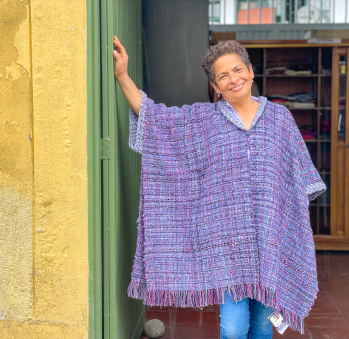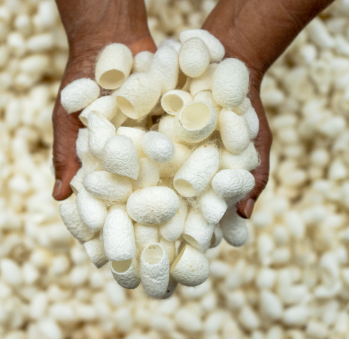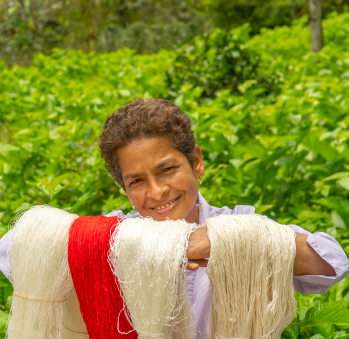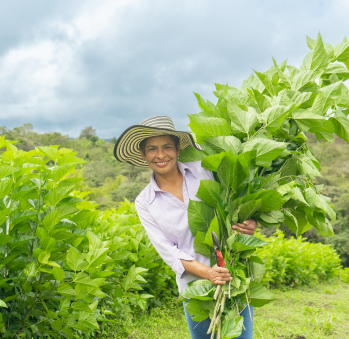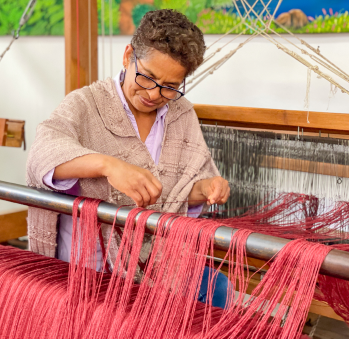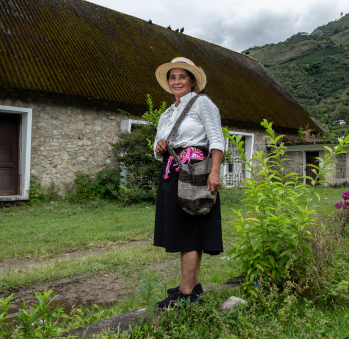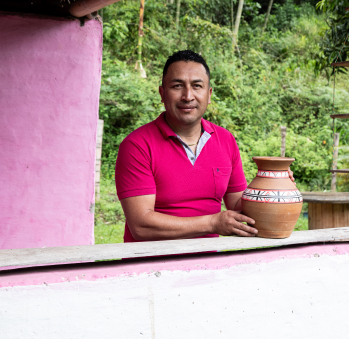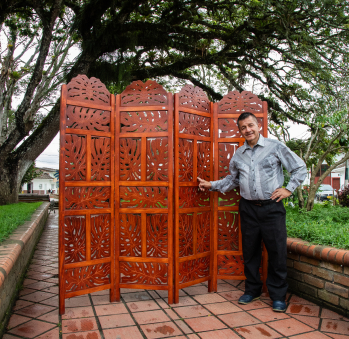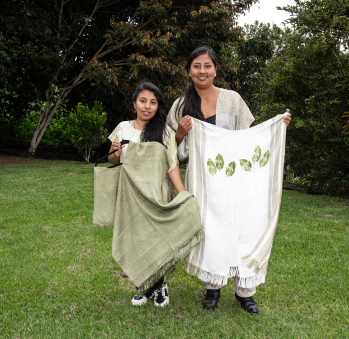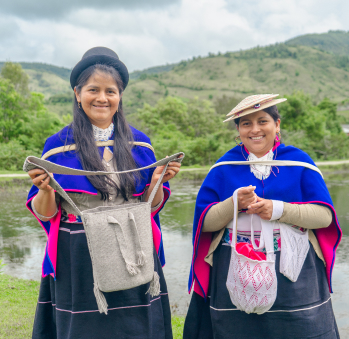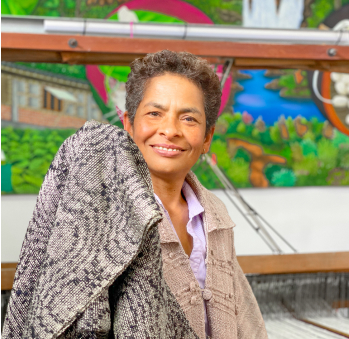Amparo Navarro
Workshop: Colteseda
Craft: Weaving
Trail: Popayán-Páez Route
Location: Timbío, Cauca
SCHEDULE YOUR VISIT
Vereda las Guacas, Timbio, Cauca
3136804803
amparoseda2011@gmail.com
@colteseda
@Colteseda
It is hard to find someone who loves what they do more than Amparo Navarro. She speaks about “them” with compelling devotion. “They” are silkworms and thanks to “them” she has built a life for herself. This woman has worked for 40 years in the thread-weaving trade. She came together with other women at the beginning of the new millennium and founded Coltesada. This is a very serious organization and it is led exclusively by women. It is a splendid example of management —they oversee the entire production process: from the cultivation of raw materials, to the commercialization of the woven product— and the perfect excuse to go discover a little piece of Cauca: Timbío.
Amparo remembers how this magic worm came to her land. She was a young girl who had just finished high school when, in the middle of a coffee crisis during the 1980s, the Federation of Coffee Farmers wagered on the diversification of the coffee bean. They set up Hilosedas in Timbío, an industrial silk thread plant, and were supported in its assembly by Chinese know-how. That was how sericulture began to be talked about. Many farmers like Amparo’s parents became enthusiastic about the business of cultivating and exporting raw silk. They learned about the cultivation of the mulberry tree, the plant that feeds these prodigious bugs. And, although there were still no expert silk weavers in Colombia, a master weaver of sheep wool and fique came to support them. Afterwards, Artesanías de Colombia provided them with new knowledge in dyeing and weaving, which allowed them to continue making progress. “That’s how we learned, through trial and error,” Amparo recalls.
But the truth is that what seemed to be an advantage at first —the lack of seasons in Colombia— did not result in the best and easiest adjustment of the worm to our climate. The idea that there would be permanent production of raw materials turned out to be a utopia. Despite the large investment that so many had done and of patiently waiting, the business did not prosper, and many lost their money and their energy. However —and this is where the fairytale character of the story comes from—,that first company discarded many cocoons because of their shape and color, because they were not able to be rounded up for this industry. The daughters of the farmers were called to action to transform these discarded cocoons into usable materials. Their performance was so good that the trade got developed further precisely on this manual front. That’s how Amparo became one the pioneer women involved in the silk trade in Colombia.
If one were to try and replicate the formula for success that this tale needed, one would have to add main ingredients that are intangible and unquantifiable. How do you measure devotion, abnegation, or the love for the processes that succeed? The truth of the matter is that the twelve women that are part of Coltesada today do not just know how to handle money with precision: they lived through a bonanza period during the late nineties, were able to use the money wisely and bought a new lot that was sold again later in 2011 to build a bigger farm. They also worked in sustainable projects together with private companies and international cooperation to sow 19,000 mulberry tree seeds in only 12 acres of land. To understand the dimensions of the numbers, Amparo recounts her books: “a box of worms is more or less 20,000 insects that eat about 450 kilos of mulberry leaf, which are taken from about 1,500 bushes. These worms produce between 35 and 40 kilos of fresh cocoon, which means between 3.5 and 4 kilos of silk, with which we can make about 35 shawls or 45 scarves.” Another striking fact is that a cocoon can contain a kilometer and a half of silk thread.
Too many unbelievable facts to not want to meet these prodigious women and their work, and to not let them take us by the hand in this adventure through silk in the most generous and excited way. Do you have any doubts about why you should never miss out on visiting Timbío?
Craft

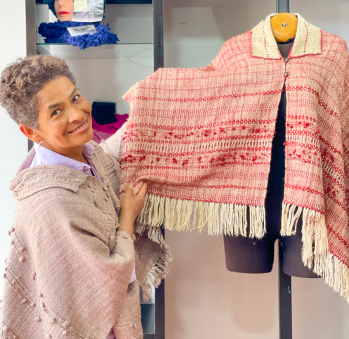
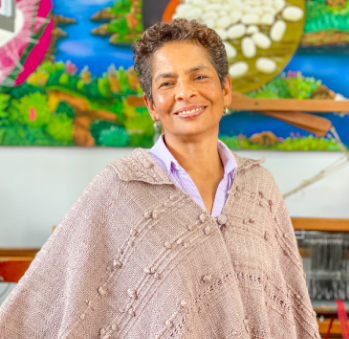

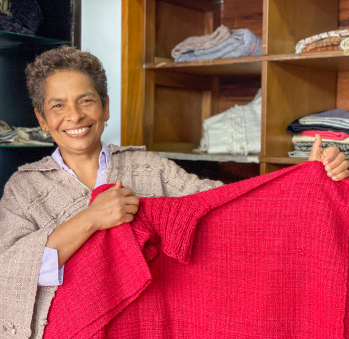





Artisans along the way
Artisans along the way
No puede copiar contenido de esta página








































